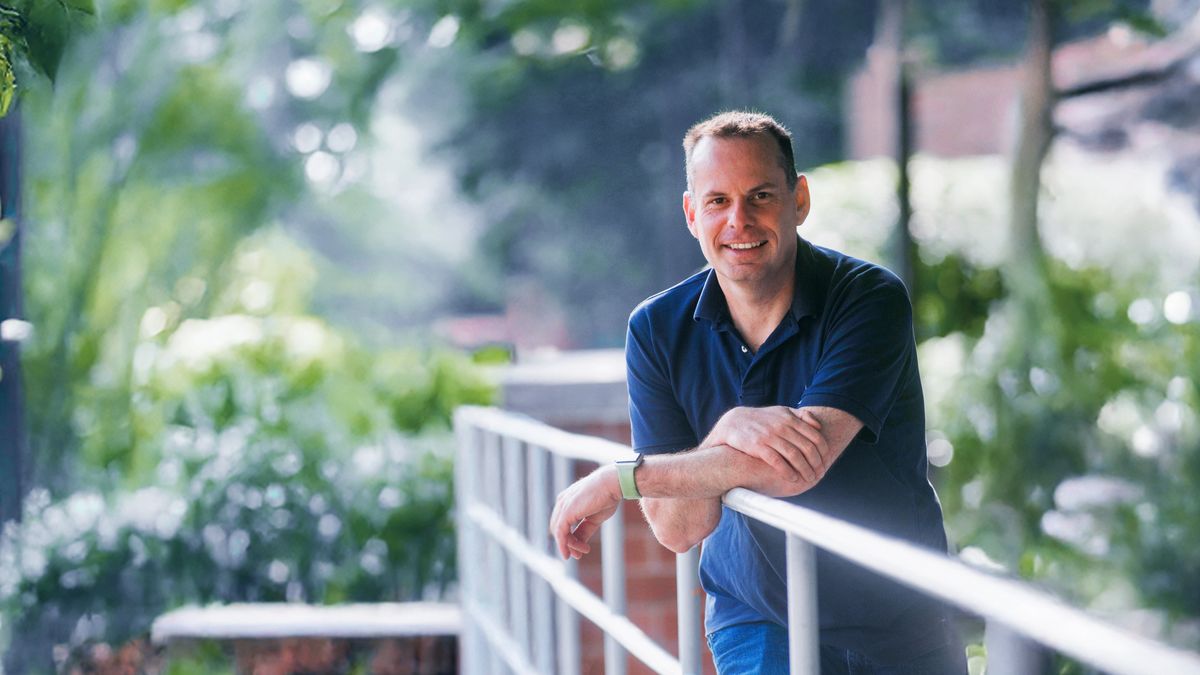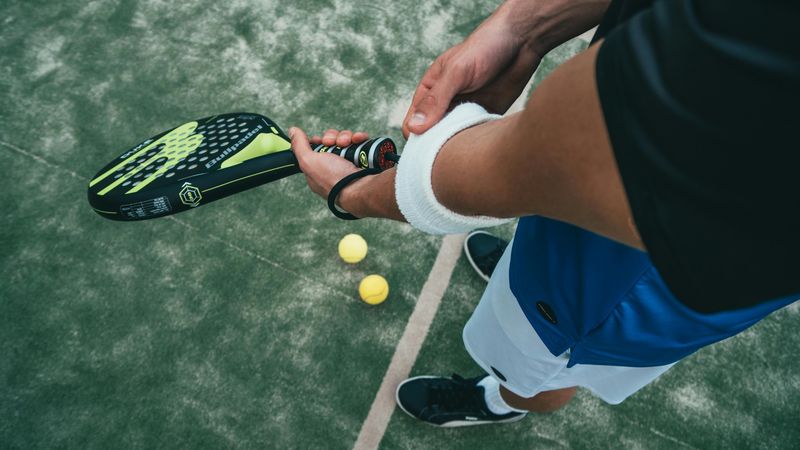Founder Interview: Dr. Gil Blander, Founder of InsideTracker

In our Founder Interview series, we highlight the brightest minds in preventive health, wellness, and longevity. In Episode 7, we’re honored to feature Dr. Gil Blander, founder of InsideTracker—a leader in personalized health and longevity through biomarker-based insights.
Tell us a little about yourself and your current venture
I am a scientist and entrepreneur with a lifelong passion for understanding the biology of aging and extending human healthspan. After earning my Ph.D. in biology from the Weizmann Institute of Science in Israel, I completed postdoctoral research on aging at MIT. My career has been dedicated to bridging the gap between scientific discovery and practical health solutions that people can use in their daily lives to optimize longevity, performance, and well-being.
I founded InsideTracker with a team of scientists from MIT, Harvard, and Tufts with one clear mission: to help people live healthier, longer lives. InsideTracker is a personalized health platform that uses blood biomarkers, DNA, physiological data, food and supplement consumption, and daily habits to provide science-backed recommendations tailored to each individual. Our goal is to transform cutting-edge scientific research into actionable guidance that empowers people to make smarter, data-driven decisions about their nutrition, exercise, sleep, and overall lifestyle.
As the host of the Longevity by Design podcast, I have the pleasure of speaking with the world’s leading researchers, clinicians, and thought leaders in the fields of aging, health, and performance. Each episode is an opportunity to explore the latest scientific breakthroughs and practical strategies for improving healthspan. My goal with this podcast is to make longevity science accessible, insightful, and actionable for anyone who wants to live a longer, healthier, and more vibrant life.
How do you balance the demands of running a business while maintaining your own health and longevity?
Balancing the demands of running a business with maintaining my own health and longevity is both a personal commitment and a daily practice. As a scientist and the founder of InsideTracker, I deeply believe that you can’t just talk about health, you have to live it. I make it a priority to regularly measure my own biomarkers, track my sleep using Oura ring, stay active, and follow personalized nutrition and lifestyle recommendations based on real data (the same approach we offer our customers). Of course, like any entrepreneur, there are intense work periods, travel, and stress, but I’ve learned that small, consistent habits, like taking breaks to walk, and protecting time for exercise (I exercise every day, even when traveling) help me stay energized, focused, and resilient. My personal health is not separate from my work; it fuels it. By living what I preach, I aim to be an example of how science-based decisions can truly optimize longevity, even in the middle of building and leading a fast-growing company.
Do you have a personal health goal? What is it?
My personal health goal has always been clear: to stay as healthy and vibrant as possible for as long as I can. For me, it’s not just about lifespan—it’s about healthspan. I want to remain strong, energetic, and capable well into my 80s and 90s. I imagine myself in the future, climbing mountains and riding my mountain bike alongside my grandchildren, fully engaged and enjoying life without limitations. This vision motivates the daily choices I make, from the food I eat, the sleep I protect, to the biomarkers I track and optimize. It’s also the deeper reason why I founded InsideTracker, to help others achieve the same kind of long, active, fulfilling life.
Before launching InsideTracker, can you walk us through the “aha” moment that inspired the creation of your service?
The “aha” moment that inspired me to create InsideTracker came from a deep frustration I felt while working in the world of academic science and biotechnology. Despite all the amazing breakthroughs in aging, genetics, and nutrition happening in research labs, none of this knowledge was reaching the people who needed it most—everyday individuals trying to live healthier, longer lives. I realized that while we were making incredible progress in understanding the biology of aging and performance, there was a massive gap between the science and practical, personalized guidance. That’s when the idea for InsideTracker was born: to bridge this gap by using science and data—real blood and physiological markers—to give people actionable, personalized recommendations to optimize their healthspan. It was the moment I understood that helping others live longer, better lives could be both my purpose and my life’s work.
What sets InsideTracker apart in the health and wellness industry?
InsideTracker’s “secret sauce” lies in its unique ability to combine cutting-edge science, personalized data, and actionable recommendations into a simple, user-friendly platform. What sets us apart is the integration of multiple data streams—blood biomarkers, DNA, fitness tracker data, and lifestyle information—into a comprehensive, science-backed algorithm that generates highly personalized health and longevity guidance.
We don’t offer generic advice. Instead, we tap into peer-reviewed research and an ever-growing database of human biomarker data to deliver precise, prioritized recommendations based on an individual’s actual biology. This means that every InsideTracker plan is truly tailored, whether the goal is improving energy, optimizing sleep, building strength, or extending healthspan. Our science-first, data-driven approach, backed by a world-class team of scientists, dietitians, and aging experts, is what makes InsideTracker so effective—and so different from the noise of one-size-fits-all health solutions on the market.
What’s the most surprising lesson you’ve learned from your customers or users?
One of the most surprising and valuable lessons I’ve learned from our customers is how much they value simplicity. While we built InsideTracker on a foundation of deep science and complex data analysis, what our users really want is clear, straightforward guidance—they want to be told exactly what to do in order to improve their health. At the same time, they appreciate having the option to dive deeper and learn more if they’re curious, but simplicity always comes first.
Another important insight is that people are very motivated by seeing progress—and seeing it fast. This is where wearable data becomes so powerful, because it gives them real-time feedback and a sense of momentum between blood tests or DNA insights. Our users have shown that they are absolutely willing to put in the effort—whether it’s changing their diet, improving their sleep, or adjusting their exercise routine—but only if they can see and feel that these changes are making a positive difference. Progress, simplicity, and actionable clarity are the keys they value most.
What is the most groundbreaking or unexpected finding in the field of longevity research that you’ve come across recently, and why do you find it so compelling?
One of the most groundbreaking and exciting developments I’ve come across in longevity research recently is the concept of cellular reprogramming. The idea that we can potentially reset the biological age of cells, essentially turning back the clock without fully reverting them to a pluripotent, embryonic state, is truly remarkable. This process, sometimes called partial reprogramming, holds the promise of rejuvenating tissues and organs while preserving their identity and function.
What makes this so compelling is that, unlike traditional approaches that try to slow aging or manage age-related diseases, reprogramming addresses the root causes of aging at the cellular level. It suggests that aging is not an irreversible decline, but rather a process that can be modified or even reversed under the right conditions. Early studies in animals have shown improvements in tissue function, resilience, and even lifespan extension, which could eventually translate to human health and longevity.
If this technology can be safely and precisely controlled, it may fundamentally change how we think about aging, not as something inevitable, but as a modifiable biological program. The potential impact on healthspan and disease prevention is enormous, and that’s why I find this area of research so exciting.
In your opinion, which emerging longevity trend or product will have the most transformative impact on our health over the next five years, and why?
I believe personalized healthspan optimization—like what we do at InsideTracker—will have the most transformative impact, as it empowers individuals with tailored, data-driven insights to make meaningful, sustainable changes that improve both lifespan and quality of life.
One thing you wish more people knew about health and longevity?
Wish more people knew that health and longevity are driven 80% by behavior and only 20% by genetics, meaning your daily choices matter far more than your DNA.
What is the biggest longevity myth you’d like to debunk?
The biggest health and longevity myth I’d like to debunk is that there’s one “best” diet—like paleo—that works for everyone, or that your genetics significantly limit what you can achieve, and also the misconception that strength training is bad for women; in reality, personalized approaches and strength training are key to lasting health regardless of genetics.
If you could recommend only one supplement for a longer, healthier life, which would it be, and what makes it indispensable?
I’d recommend personalized supplementation based on your unique biomarkers, as targeting your specific nutritional needs is the most effective way to support a longer, healthier life.
How old can we potentially become at maximum?
Without cellular reprogramming, the maximum human lifespan appears to be around 120 to 122 years, as exemplified by the longest-lived person on record.
If there’s one message or insight you’d like readers to take away from your journey, what would it be?
Your health is your greatest investment — take control of it early, make decisions based on data and personalization, and small, consistent actions today will shape a longer, healthier, and more vibrant life tomorrow.
References
Author: Karol Domagalski
Family and health first. Big on sports, nutrition, longevity, travel, and all things digital. Founder of New Zapiens, on a mission to help people live their best lives.




